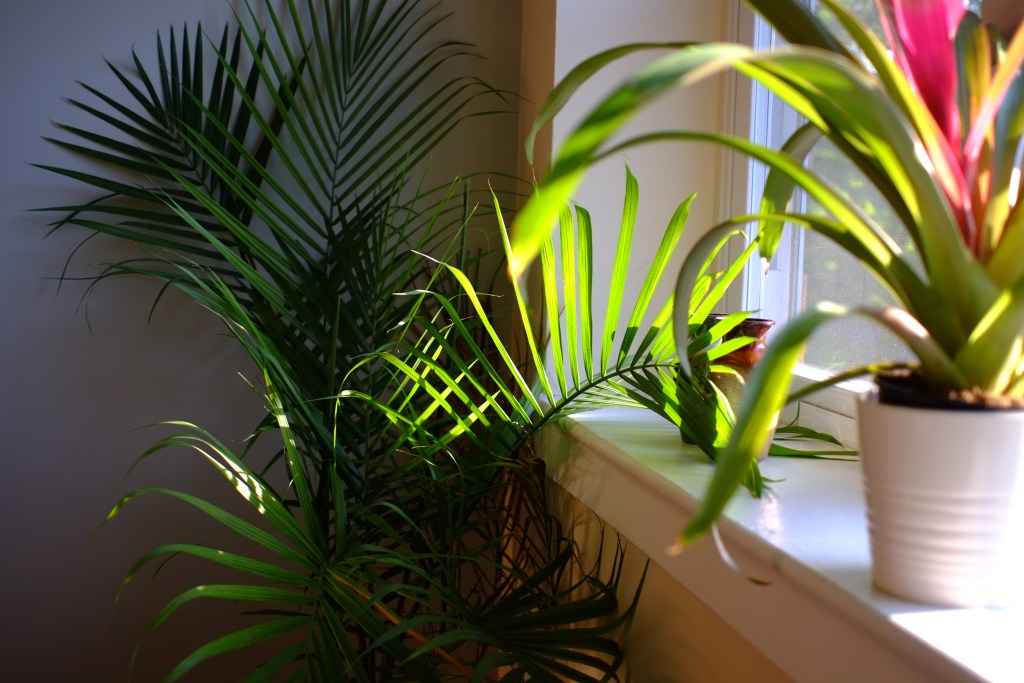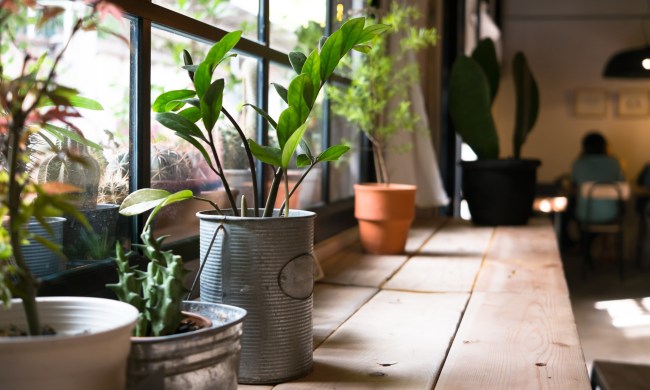A majesty palm’s long green fronds can lend a bit of elegance to any room in your home, but it does have a bit of a reputation for being a temperamental plant. That doesn’t mean you shouldn’t add one to your home or need to be an experienced grower, though; it just means you need to know how to care for this slow-growing, humidity-loving plant.

How much sun does a majesty palm need?
The species is native to tropical regions, so the majesty palm generally does well in temperatures ranging from 65 to 85 degrees Fahrenheit. It also requires plenty of sunlight and moisture to thrive, so place your majesty palm near a window that gets sun for six to eight hours per day.
How much moisture does a majesty palm need?
Water: It’s important to give your majesty palm enough water, but not too much. Select a pot with drainage holes in the bottom so that excess water doesn’t drown the roots and cause them to rot. Never let the soil in the pot dry out completely or you’ll find yourself with a dead plant on your hands.
Humidity: These plants can thrive in normal indoor humidity levels, but if you live in an area that has cold, dry winters, you may need to run a humidifier or mist the plant every day to keep it moisturized.
Know when and how to fertilize a majesty palm
Majesty palms grow well in acidic soil with a pH as low as 5.0. To keep the pH at an appropriate level, we recommend using a potting mix for cacti or succulents and adding some peat.
Fertilize the plant every two to three months during the spring and summer, and use supplemental iron and Epsom salts for extra magnesium. Those supplements will help prevent the leaves from yellowing.
If your plant begins to stretch out, cut back on the fertilizing or stop altogether. Come wintertime, you can pause the fertilization until the next spring.
 Help your majesty palm thrive in your home
Help your majesty palm thrive in your home
Majesty palms grow slowly indoors, usually up to 12 inches per year, and reach a height of about 10 feet. You’ll know that your majesty palm has outgrown its current pot when you can see the root emerging through the top of the soil. At that point, transfer the palm to a larger pot, being careful not to damage the root ball. You should only have to repot the plant about once every two years.
Regular pruning can help your majesty palm maintain its beautiful appearance, so stay on the lookout for yellow or brown fronds and cut them off when they appear.
Protect your majesty palm from pests
Pests such as aphids, scale, and whitefly prey on majesty palms, and low humidity can invite spider mites and mealybugs inside. Fertilizing your plant and giving it plenty of moisture can keep these spider mites away. If your majesty palm isn’t getting enough moisture from the air, mist it with water or wipe a damp rag along the undersides of the fronds.
Know how to recognize and deal with common problems
Yellow leaves: Pay attention to the color of your majesty palm’s leaves — a change in color indicates that there is a problem. If the leaves turn yellow, the majesty palm likely isn’t getting enough light, is receiving too much or too little water, or has a nutrient deficiency.
Brown leaves: If the leaves are turning brown and crispy, the palm is receiving too much sunlight exposure and needs to live in an area that isn’t quite as bright. Brown spots on the leaves can point to a problem with insects, and leaves that are only brown at the tips signal that the plant needs a little more water.
Moisture issues: If your majesty palm isn’t getting enough moisture, and the humidifier and mistings aren’t helping, fill a wide, shallow container with gravel or sand and water. Then place the pot on top of the container so the bottom rests just above the water. When the water in the humidity tray evaporates, it will increase the amount of moisture in the air around the plant.
Majesty palms are beautiful plants that can make any indoor space feel more relaxing and inviting. You can turn your home into a tropical oasis as long as you know how to handle common issues and intervene when your plant is showing signs of distress.
 Help your majesty palm thrive in your home
Help your majesty palm thrive in your home


